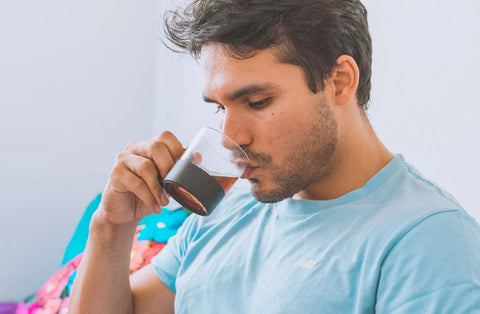- Sri Lanka Plantations
- How to Choose the Ceylon Tea by Region
- How to Choose the Ceylon Tea by Grade
- Signs of the Original Ceylon Tea
- Benefits of the Ceylon Tea
- How to Brew the Ceylon Tea
- The History of the Ceylon Tea
The Range of Ceylon Teas
Sri Lanka (known as Ceylon until 1972) is a small island of only 65,610 sq. km. At the same time, there are as many as 200,000 hectares of tea plantations within its territory. In contrast, India, which is 50 times larger, has only 560,000 hectares allocated for plantations. Of all these lands, highlands are the most valuable. Teas from middle-grown plantations follows the highland teas in terms of popularity, being followed by the low-grown teas. Accordingly, the price of a tea leaf varies depending on the place the raw materials are collected.

Choosing Tea by Region
Experts highlight seven main tea regions: Nuwara Eliya, Uda Pussellava, Dimbula, Uva, Kandy, Ruhuna, and Sabaragamuwa. The taste and aroma of tea leaves varies depending on different plantations, yet an ordinary buyer is unlikely to notice this difference. For the most part, all the Sri Lankan tea has averaged characteristics: a consistently good quality and no specific features. However, if it is important for you to get closer to buying the ideal Ceylon tea, make a choice in favour of packs that indicate the high-mountain "elite" regions of Nuwara Eliya and Dimbula. The classic tea (in terms of flavour profiles) is harvested in Sabaragamuwa, where the most extensive plantations are located.

Choosing Tea by Grade
Sri Lanka has adopted a worldwide classification of tea by a tea leaf type and its processing. The tea packages often have the marks of Orange Pekoe (OP), meaning the tea which consists of whole leaves of medium size. The tea grades that consist of whole leaves are highly valued among many other ones, and FTGFOP, a tea with a high content of tips, i.e. unopened upper tea leaves, is considered truly elite.
Richard Royal Ceylon Tea is a premium OP tea blend from the Sri Lanka highlands.

What Tea Grade Can Be Called the True Ceylon Tea?
There is an opinion that only the tea packaged in Sri Lanka in packages with the traditional Sri Lanka coat of arms, depicting a lion, can be called the true Ceylon tea. It used to be true a while ago. Moreover, in order to get the desired coat of arms for their packages, manufacturers would do their best proving that their goods met all the quality standards of the country.

However, everything has changed since then. There are many plantations on the island, as well as producers; besides, a significant part of the raw materials is exported to the countries, where products such as Richard Royal Ceylon, Ahmad Tea Ceylon, Dilmah Ceylon, etc. are made on their basis. The quality standards, of course, are still a landmark, but now they depend on the buying company. The same refers to the package. This is absolutely not a sign of a deteriorating tea flavour – it just means that each brand has its own requirements for the final image of the product.
Today the Ceylon tea is any tea made 100% from raw materials grown in Sri Lanka. It may be black, green and even white. It may be a blend from different plantations of the island. All that matters is that there must not even an admixture of leaves from other regions in such a blend.

As for the logo of a lion, it is rather a tribute to tradition. For those wondering how exactly the manufacturer can get and use the prized coat of arms, here is a brief memo (it has remained unchanged over the years):
- the lion logo can only be used on consumer packages;
- the product must contain 100% pure Ceylon tea;
- the package should only be made in Sri Lanka;
- a brand using the lion logo must meet the quality standards set by the Sri Lanka Tea Council.

Benefits of the Black Ceylon Tea
In Sri Lanka, as in any tea region, the collected leaves are processed differently, resulting in different types of tea. In this case these are black, green, white and oolong tea. Nonetheless, the green Ceylon tea is quite rare, let alone white and oolong Ceylon teas. Most often, classic black tea goes on sale, the result of a complete fermentation. In a nutshell, speaking about the beneficial properties of Ceylon products, we can safely mention those that refer specifically to black tea.
- The Ceylon tea is antioxidant-rich (quercetin, myricetin, kaempferol, theaflavins, thearubigins, tannins).
- Consumed regularly, the tea can protect from chronic cardiac and vascular diseases, as well as from the cancer and diabetes, reducing blood sugar level in prediabetic people.
- It is also assumed to equalize the level of bad cholesterol (but the relevant studies are still underway).
- Besides, black tea gives vivacity, because it contains caffeine, and a pleasant feeling of relaxation, thanks to L-theanine.

The following side effects from drinking the Ceylon tea, as a rule, may only be caused by an overdose of caffeine:
- overexcitation,
- rapid heartbeat,
- sleep rhythm disturbance,
- headache
You need to drink a lot of strong tea to get such consequences, though. However, this will not happen to you, because we will tell you how to brew a proper Ceylon black tea.

How to Brew the Ceylon Tea
If we talk on the classic black tea, then it should be brewed in a classic way – the so-called gongfu style, using as much hot water as possible so that the dry leaf fully shows its health properties.
- Bring clean filtered or bottled water to the first or second stage of boiling, when small bubbles are just beginning to rise to the surface.
- Rinse the teapot with hot water, then put dry tea in it at the ratio of 1 tsp per cup of the ready-made drink (200 ml).
- Rinse the tea: pour some boiling water into the teapot and empty it immediately.
- Fill the teapot with the amount of water you need (for 1, 2 or more servings), and let it brew for 1-2 minutes.
- Pour the resulting infusion into glasses or cups without residue.
Enjoy a fragrant refreshing beverage!
The Ceylon tea goes well with milk, it can also be drunk with lemon and a small amount of sugar.

Nota Bene
It is highly undesirable to leave the made infusion in the teapot "for the next time".
It is not recommended to infuse tea for more than 5 minutes and drink it undiluted after that (this is where caffeine oversaturation can occur).

In the Beginning Was the Coffee… How the Famous Ceylon Tea Appeared and Gained Its Popularity
It all started in the XVI century. It was then that the aggressive Portuguese seized a beautiful island in the Indian Ocean, divided by the indigenous population into several small kingdoms, called it Ceylon and turned it into a huge plantation for growing cinnamon, fashionable at that time.
In the XVII century, the Dutch anchored in the azure waters of the new colony and asked the Portuguese conquerors discourteously to liberate the fertile territories. Of course, the Dutch had no concern for returning the lands to the natives: instead, the Dutch had their eyes on the coveted prize themselves.

However, these conquerors did not stick it out long either: in the XVIII century, the Dutch were replaced by the British, and the whole of Ceylon, as far as the eye could see, was a colony of the British Empire until the end of the XX century. Since the demand for cinnamon had long fallen, the British decided to grow coffee on the island.
They say that that coffee was good and in great demand in Europe, but all plantings died due to pests by the end of the XIX century. It was then that His Majesty Tea took the stage. Thanks to the established trade chains, the British quickly managed to develop a tea business on a ready-made infrastructure. It turned out to be even more promising than coffee growing. The Ceylon tea brand became known all over the world before much longer, with the high quality closely associated with the brand.

In 1972, the country received its sovereignty and a new name – Sri Lanka, which means "the blessed land". In a passionate desire to break with the colonialist past, its inhabitants really wanted to get rid of everything related to the "Ceylon", but with regard to tea, this would lead to the disappearance of the world brand, and the cost of promoting a new one would be ruinous for the industry. Fortunately, reason prevailed over heart: the name of the product remained unchanged. And although the name of Ceylon has sunk into oblivion, Ceylon tea has been produced up to now.
What about you? Are you a Ceylon tea drinker?
Check our Ceylon Tea in brand store.
Author: Elena Kocheshkova, journalist
Expert: Andrey Skidan, a teatester and a Richard brand tea production manager
Translator: Sofya Zagrebina
Source: tea.ru

